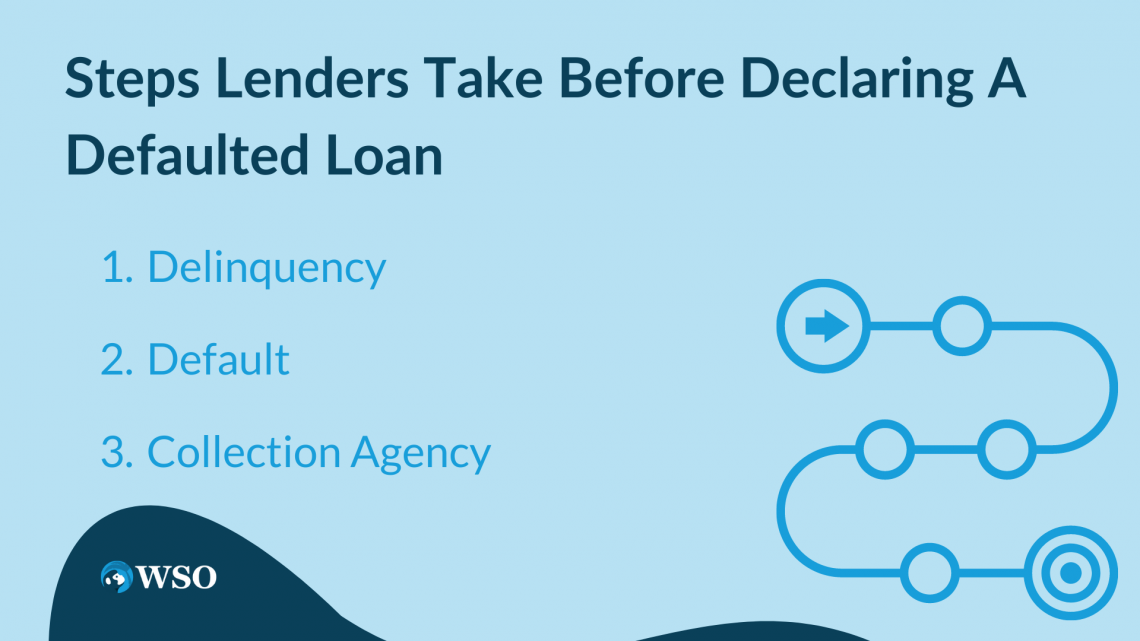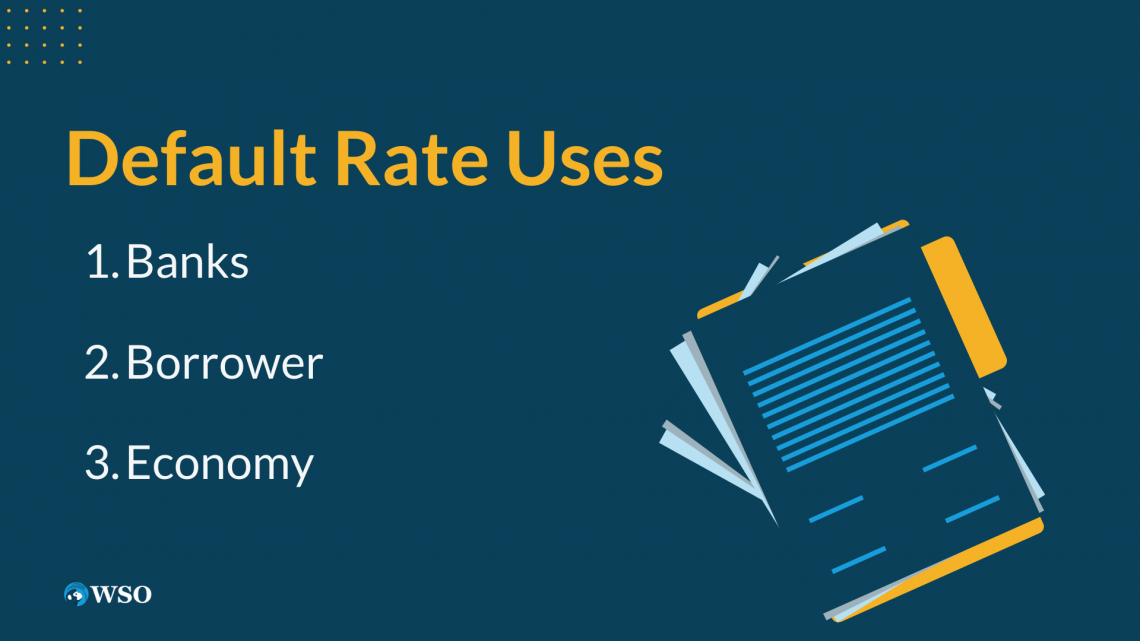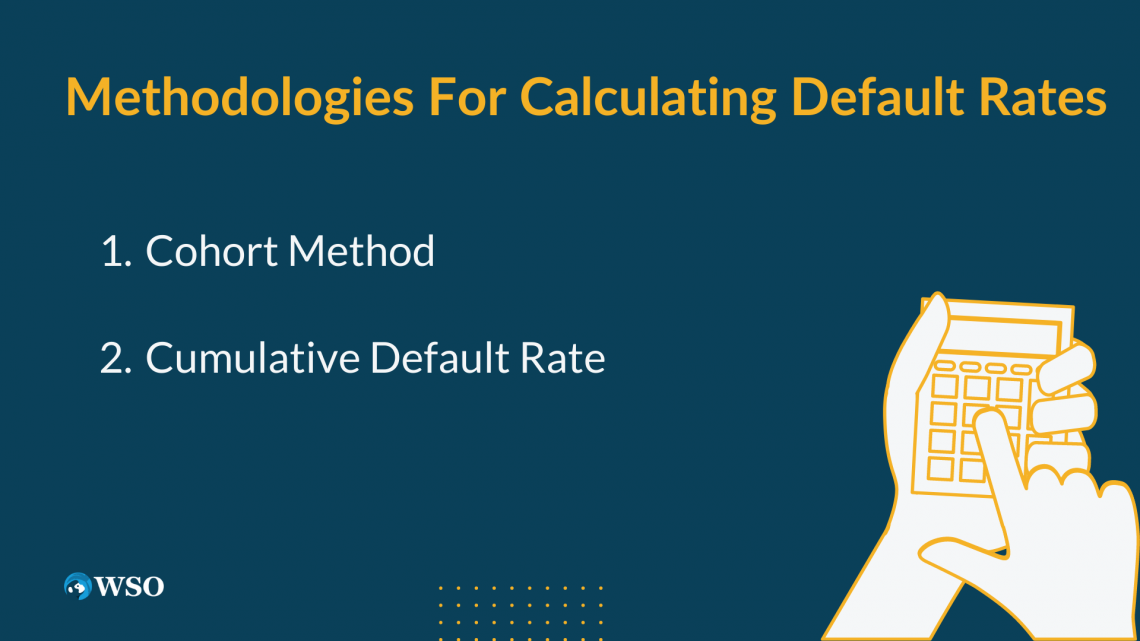Default Rate
It refers to loan amounts unpaid by the borrower after a specific time
The default rate is the percentage rate of loans left unpaid by the borrower for a prolonged time issued by a financial institution lender. It is a critical metric for assessing the risk associated with loan repayments in lending and finance.

The late payment day varies depending on the initial loan agreement. However, it is typical for a loan to be declared default after it is 270 days late, but this is not a universal standard.
The specific time frame for declaring default may vary among lenders and loan types. There are several different credit methods that this rate can be applied, such as mortgages and credit card debt.
When a loan is declared default, the institutions will write it off as uncollectible for accounting purposes. This allows institutions to transfer the account in arrears to a debt collection agency.
The debt collection agency’s role is to act as a middleman and collect any overdue debt funds to return to the lender.

Sometimes, a default is a higher interest rate applied to the loan amount after frequently missing or paying late payments.
Default rates and penalty rates are separate concepts that commonly get confused. The default measures the percentage of loans in default, while penalty rates represent the additional interest or fees charged for late payments.
The rate of default is significant because it quantifies the proportion of borrowers who fail to honor their financial obligations, providing valuable insights into borrowers' creditworthiness and the health of lending institutions.
They are commonly expressed as a ratio or percentage, representing the number of defaults divided by the total number of loans or obligations in a given portfolio.
Key Takeaways
- The default rate refers to loan amounts unpaid by the borrower after a specific time.
- When a loan is declared default, it is written off as uncollectible.
- A penalty rate is when a financing option is given a higher interest after repeated failure to make timely payments.
- The default rate of banks' loans can be a helpful indicator of economic health and other indicators–such as inflation, GDP, unemployment, and the stock market.
- Indicator of economic health.
- The default rate helps assess the overall risk factor of a borrower.
Understanding The Default Rate
The default rate is essential in many scenarios, such as statistical measures and risk assessments. Lenders find great value in this rate because it lets them know the probability that the borrower will pay their dues on time.

In the case of a financial institution, they can find value in looking at their rate of default. If they find this value high, they will be more likely to reassess their lending procedures and rates moving forward.
Economists find a use for this rate when evaluating the economy. They can relate this number to other statistical factors to determine a country’s health. This is useful because it gives them a numerical percentage of how likely the public will pay back their obligations.
Since it is the borrower's responsibility to pay their balances on time, it is vital to have a system that penalizes them if this does not happen. That way, lenders will be protected, and the system will remain intact.
Note
When an individual obtains a loan with a bank for any reason, they are held to the standard of paying their dues on time. Not only can this penalty rate be a detrimental consequence for the borrower, but it can negatively affect their credit score.
This penalization is called a default rate, where the lender writes off the unpaid loan amount from their books and sends it to a collection agency to take care of it.
Anything called ‘default’ in the financial industry typically negatively affects a person's credit score. Defaults are reasonably challenging to combat and can take years to improve again.
Delinquency Vs. Default
Delinquency is another similar term that gets commonly mistaken for default. Delinquent means the lender, bank, or any other financial institute has reported their credit amount to a debt collection agency.

The main difference between delinquency and default is that delinquency refers to a late or missed payment within a certain time. While default refers to a more severe stage of lateness where the loan is officially declared uncollectible.
The time frame for declaring default varies depending on the lender’s policies and the type of loan. A common example would be after 60 days or after a borrower has missed two consecutive payments, but again this varies.
After a default is declared, the lender can apply the penalty rate, raising the interest rate on their original loan agreement.
Note
When a borrower’s payment is considered delinquent, it is kept on record in their credit history. This is for lenders to assess their risks in the future.
Here are the steps lenders take before declaring a defaulted loan:

1. Delinquency
Lenders typically report the borrower to the credit collection agency when they are 60 days late on their first payment. This is considered a 60-day delinquency.
2. Default
Lenders will contact the collection agency if payments continue to be missed. After missing six months, two consecutive payments, or being 270 days late, the lender will declare the loan to default.
3. Collection Agency
After a loan is in default, a collection agency will step in to do whatever is necessary to obtain the payment for the lender. This can include lowering their credit score and taking collateral. Nonetheless, the original borrowing arrangement will be put to an end.
Note
Once a defaulted loan is recorded to an individual’s account, it makes it harder for them to obtain further financial funding after the fact. It also takes a toll on their credit score.
Lenders will disclose penalties for late payments on the original lending agreement when a credit line is issued. It is crucial to read the fine print on these to avoid getting stuck in any situation you cannot recover financially.
Default Rate Uses
Default rates give us insight into many scenarios, such as banks, borrowers, and economic rates. Individuals can study how the rate affects these three sectors according to their needs.

Let’s take a look at how a bank, borrower, and economy's default rates are useful:
1. Banks
Financial institutions will frequently look at their lending rate concerning the industry to determine their standing. We now know that a high rate indicates a high likelihood that the borrower will commit delinquency.
Therefore, when a bank has a high rate, it lets them know that they might need to review or make some changes to their lending agreements to prevent this from happening. Sometimes the cause of this can be a higher interest rate than most people can manage.
When a financial institution aims to lower the rate, it protects them from losing significant amounts of money from unpaid loans. They can also evaluate who they are lending their money more strictly.
For example, research has shown that the unemployed, senior citizens, and singles are more likely to default than any other group.
Note
A bank’s loan characteristics, such as interest rates, loan-to-value ratios, loan duration, and repayment terms, can affect penalty rates. Their higher interest rates or unfavorable terms may increase the risk of default.
2. Borrower
Institutions assess their risk from borrowers by looking at their default percentages, among other things. The rate will let them know whether they have had a history of making late payments or missing payments.
Rates are an essential tool to screen people asking for funding because it tells you how trustworthy and responsible they have been with money in the past.
Borrowers who default on their loans may face negative impacts on credit scores, difficulties obtaining future loans, potential legal actions, and other significant long-term financial consequences.
Therefore, borrowers must make their payments on time to avoid financial disasters that are hard to recover from.
Note
A high rate will make banks weary of lending them funds. Most banks hesitate and either apply a higher interest rate in the lending agreement or will not proceed.
Credit history, income stability, employment status, and debt-to-income ratio influence borrowers' default likelihood. Lenders consider these factors during the underwriting process to assess the creditworthiness of borrowers.
3. Economy
Economists often refer to this rate of default, among other factors, when studying economic health. The rate lets them know the public’s borrowing capability about outside market factors.
The rate gives insight into credit market conditions, financial stability, economic cycles, risk assessment, risk management, and policy implications.
There are plausible reasons for a higher or lower rate, and it is typically one of the first signs of an economic cycle change.
Economic factors such as GDP growth, unemployment, and interest rates significantly impact borrowers' ability to repay debts. Deteriorating economic conditions often lead to higher penalty rates.
Note
The default rate has practical applications in lending, investment, credit rating, policy formulation, risk management, macroeconomic analysis, and academic research.
By incorporating analysis into decision-making processes, stakeholders can assess credit risk, make informed investment choices, formulate effective policies, and better understand the dynamics of financial markets.
Default Rate Formula
The calculation of default can vary depending on the specific context, data, and purpose of analysis. Here are two commonly used methodologies for calculating default rates:

1. Cohort Method
The cohort method tracks a specific group of borrowers over time to determine the proportion of defaults within that group. The steps involved in calculating the default rate using the cohort method are:
- Step 1: Define the cohort: Select a specific group of borrowers with common loan characteristics.
- Step 2: Determine the observation period: Decide when the rate will be measured. It could be a specific number of months, years, or until a particular event, such as loan maturity.
- Step 3: Identify defaults: Determine the number of borrowers within the group who have delinquent payments.
- Step 4: Calculate: Divide the number of defaults by the total number of borrowers in the group. Multiply the result by 100 to express it as a percentage.
Default Rate = (Number of Defaults / Total Number of Borrowers) x 100
2. Cumulative Default Rate
The cumulative default rate measures the total percentage of loans or obligations in a portfolio that have defaulted over a specified period. The steps involved in calculating the cumulative default rate are:
- Step 1: Define the portfolio: Determine the set of loans or obligations for analysis.
- Step 2: Determine the observation period: Decide on the period to measure the rate.
- Step 3: Identify defaults: Determine the number of delinquent loans or obligations within the portfolio.
- Step 4: Calculate: Divide the number of defaults by the total number of loans or obligations in the portfolio and multiply the result by 100 to express it as a percentage.
Cumulative Default Rate = (Number of Defaults / Total Number of Loans or Obligations) x 100
Note
It is crucial to ensure consistency in the definition of default across different analyses and to account for any specific criteria or industry standards when determining defaults.
Lenders can mitigate default risks by implementing stricter lending criteria, offering financial counseling, and establishing proactive communication channels between lenders and borrowers.
Most banks will already have systems such as these, but these avenues must be advertised for borrowers needing to take full advantage.
The default rate for any type of loan depends on various factors, including the creditworthiness of borrowers, economic conditions, and the specific terms of the loan.
Summary
The default rate measures the percentage of borrowers who do not meet their debt obligations on time or at all. Failure to meet debt payments occurs within the specified payment period described in the original credit contract.

It serves as a critical metric in finance to assess the creditworthiness of borrowers. Banks and other financial institutions use the rate to assess the risks associated with loan repayments.
The rate can be calculated in the cumulative or cohort approach. Both methods vary depending on the lender agreement and the funds being borrowed. Lenders can choose their method to what suits their agreement best.
A consequence of the default rate can be a higher interest rate for the borrower than the number initially stated in the loan agreement. Borrowers must pay their dues on time when agreeing to a loan.
Note
Debt collection agencies also play a significant role in delinquent payments.
Debt Collection Agencies are responsible for returning the money to the lender when a borrower either misses two consecutive payments or has not paid in over two months.
We have analyzed multiple scenarios where it has proven to be an essential tool for assessing credit risk, financial stability, and economic conditions. Lenders, investors, and policymakers use the rate to manage risk and ensure the financial system's stability.




or Want to Sign up with your social account?